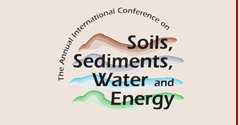Abstract
Sites with a long history of exposure to petroleum hydrocarbons contain mainly long chain hydrocarbons or “weathered oil”. This is because petroleum is a complex mixture of many organic compounds and these compounds biodegrade at different rates. Under aerobic conditions the shorter hydrocarbon chains biodegrade first and the longer chains are more recalcitrant. Long chain hydrocarbons are less soluble in water and more like tar in consistency than the shorter chain hydrocarbons, so a major problem with the degradation of these compounds is that bacteria that break down hydrocarbons do not come into contact with them. These compounds are not bioavailable and therefore do not biodegrade. A petroleum refinery that has been active for many years has a large amount of weathered oil in the surrounding soil and groundwater. A treatability study was performed on samples from the Site to determine whether conditions could be manipulated to stimulate the biodegradation of the weathered oils. Several sets of microcosms containing soil and groundwater were set up. Along with nutrients and an oxygen source, a biodegradable surfactant was added to some of the sets in order to determine whether increasing the bioavailability of the hydrocarbons would enhance their degradation. After the microcosms were set up, there was an initial increase in hydrocarbons in the aqueous phase and a decrease in hydrocarbons in the soil phase in the microcosms that had received surfactant. This change was due to the surfactant solubilizing hydrocarbons out of the soil and into the water. As the experiment progressed however, a decline in hydrocarbon levels in both soil and groundwater was observed. It was determined that by manipulating the conditions and solubilizing the hydrocarbons, biodegradation of weathered oils could be stimulated. Hydrocarbons could be removed from soils that had contained these weathered oils for many years without any appreciable degradation.
Recommended Citation
Smith, Jennifer; Dore, Sophia; Pope, Donald; Balba, Talaat; and Weston, Alan
(2010)
"Biodegradation Of Weathered Oil In Soils With A Long History Of TPH Contamination,"
Proceedings of the Annual International Conference on Soils, Sediments, Water and Energy: Vol. 12, Article 28.
Available at:
https://scholarworks.umass.edu/soilsproceedings/vol12/iss1/28
